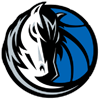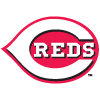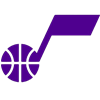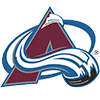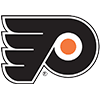Typically, this column looks at the recent past. The risers listed here are usually players who have seen their results improve lately and whose underlying skills have also improved, suggesting that they've reached a new level and aren't merely in the middle of a brief hot streak. The fallers are typically the opposite.
This week, I'm shaking up the formula in a couple ways. For starters, it's an all-risers week. No negativity here. But the risers this week haven't actually performed particularly well recently, at least from a results standpoint. Instead, the players discussed here are those who I believe to be lined up for big things in the second half, as their underlying numbers suggest they've performed quite well this season, even if the results say otherwise.
I've put together one player at every position whose expected stats (xwOBA for hitters and xFIP for pitchers) far outpace their results (wOBA/ERA). As always when using the expected stats from Statcast (which includes xwOBA but not xFIP, which uses simple fly-ball rate rather than more specific batted-ball data), it's worth getting a few caveats out of the way.
Most notably, "expected" sounds like it implies that expected stats are intended to be predictive, but that isn't the case. They're backward-looking, giving information about the batted balls a player has already hit rather than a prediction about the ones he'll hit in the future. Still, having better information about the quality of a hitter's previous batted balls certainly helps when making predictions
Typically, this column looks at the recent past. The risers listed here are usually players who have seen their results improve lately and whose underlying skills have also improved, suggesting that they've reached a new level and aren't merely in the middle of a brief hot streak. The fallers are typically the opposite.
This week, I'm shaking up the formula in a couple ways. For starters, it's an all-risers week. No negativity here. But the risers this week haven't actually performed particularly well recently, at least from a results standpoint. Instead, the players discussed here are those who I believe to be lined up for big things in the second half, as their underlying numbers suggest they've performed quite well this season, even if the results say otherwise.
I've put together one player at every position whose expected stats (xwOBA for hitters and xFIP for pitchers) far outpace their results (wOBA/ERA). As always when using the expected stats from Statcast (which includes xwOBA but not xFIP, which uses simple fly-ball rate rather than more specific batted-ball data), it's worth getting a few caveats out of the way.
Most notably, "expected" sounds like it implies that expected stats are intended to be predictive, but that isn't the case. They're backward-looking, giving information about the batted balls a player has already hit rather than a prediction about the ones he'll hit in the future. Still, having better information about the quality of a hitter's previous batted balls certainly helps when making predictions about his performance the rest of the way.
Secondly, Statcast's expected stats do have the issue that spray angle isn't considered, merely exit velocity and (vertical) launch angle, but while that means players with outlier pull tendencies (in either direction) may not be as accurately represented, for the bulk of the league, if you sort by xwOBA-wOBA, you'll find plenty of potential buy-lows. That's exactly what we'll aim to do here.
For each position, I've highlighted one player whose expected stats have far outpaced his actual stats and whose expected stats indicate that he at minimum deserves above-average results. I've also included each player's wOBA or ERA from last season in order to compare whether their expected stats merely indicate that they'll get back to the same level as last season or whether their bad luck in the first half could be hiding a genuine breakout. Players whose expected stats trail last year's actual numbers won't be considered for this article, even if the expected stats indicate a fairly substantial second-half bounce-back is coming. (Notable names in that category include Bo Bichette and Julio Rodriguez, both of whom have been among the unluckiest hitters in baseball this season per xwOBA minus wOBA, but whose xwOBAs indicate they aren't performing nearly as well as last season.)
Second-Half Risers
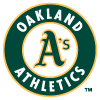 Shea Langeliers, C, Athletics: .296 wOBA, .334 xwOBA, .290 wOBA in 2023
Shea Langeliers, C, Athletics: .296 wOBA, .334 xwOBA, .290 wOBA in 2023
Judging by his surface stats, Langeliers is basically the same guy as last year. His .210/.260/.438 slash line this season offers 25 more points of slugging than his .205/.268/.413 line from 2023, but the two lines very much rhyme. But as his expected stats indicate, Langeliers is actually taking some steps forward in his second full season. His plate discipline numbers remain awful, with his 29.0 percent strikeout rate and 5.7 percent walk rate both right in line with his career norms, but he's added enough power to make his power-over-hit profile much more appealing. His barrel rate came in at an impressive 13.3 percent last year, a mark that trailed only Sean Murphy among catchers and would have ranked 20th among all qualified hitters. This year, he's all the way up at 16.1 percent, top among catchers and eighth among all qualified hitters. The fact that his contact is so loud also has Statcast believing that he should be capable of a respectable batting average (.245 xBA) despite the fact that he makes contact so infrequently. Langeliers remains a flawed player, and his low walk rate makes him a potential liability in OBP leagues, but there's enough evidence in his batted-ball stats to suggest he has more than enough power to make his unbalanced profile work in most formats.
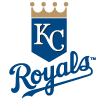 Vinnie Pasquantino, 1B, Royals: .320 wOBA, .347 xwOBA, .327 wOBA in 2023
Vinnie Pasquantino, 1B, Royals: .320 wOBA, .347 xwOBA, .327 wOBA in 2023
Pasquantino's numbers are partially held back by a slow start to the year and partially held back by some poor batted ball luck, much of which came during that slow start. If you sort by xwOBA, he's been the seventh-best first baseman this season, but if you sort by actual wOBA, he's merely been 15th-best — the difference between a borderline All-Star and a merely average starter at the position. Pasquantino's April was poor, as he finished the month hitting .208 with just four homers, but it's really more accurate to say his first 10 games were poor. Remove that stretch, in which he struck out just 11.9 percent of the time but was limited by a .125 BABIP to a .108/.214/.108 slash line, and his wOBA on the season jumps to .343. Looking at his season as a whole, he's developing into exactly the sort of hit-over-power first baseman that his prospect reports suggested he'd become. His 13.3 percent strikeout rate is excellent (despite being the worst mark of his three-year career), but his 7.6 percent barrel rate is almost exactly league average (7.9 percent). He's pulling the ball at an above-average rate (47.5 percent) and hitting fly balls at an above-average clip as well (43.9 percent), while his hard-hit rate (46.8 percent) comes in well above the league average of 38.8 percent, so expect the barrels to increase going forward. He still might not clear the fence as often as you'd like for a first baseman, especially while calling Kauffmann Stadium home, but the whole picture looks like it should add up to more than this.
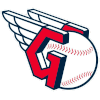 Andres Gimenez, 2B, Guardians: .287 wOBA, .315 xwOBA, .309 wOBA in 2023
Andres Gimenez, 2B, Guardians: .287 wOBA, .315 xwOBA, .309 wOBA in 2023
Gimenez was dealt to Cleveland in the Francisco Lindor trade prior to the 2021 season, and after an unimpressive half-season in his first year with his new team, he made a reasonable attempt at a Lindor impression in 2022, slashing .297/.371/.466 with 17 homers and 20 steals. His 142 wRC+ that season remains easily his high-water mark at the plate, however. He dipped to a 97 wRC+ last season and has slipped again to 87 this year, the product of a .252/.305/.342 slash line. His xwOBA tells us that he at least deserves better numbers than last season, however. If his batting average were 25 points higher, as his .277 xBA indicates it should be, he'd be having a perfectly acceptable year. He's making more contact that ever, with his 14.4 percent strikeout rate beating his previous career best of 18.2 percent by a significant margin, and while his 28.6 percent hard-hit rate is quite poor, it's right in line with his career norms (30.7 percent). Gimenez did have a 37.6 percent hard-hit rate back in 2022, though, and he's probably going to need to get back to that level if he's going to reach even 15 homers this year; he's at just five so far. Still, putting the ball in play this often should lead to a much better batting average going forward and even more chances for him to run. With 14 steals just past the halfway point of the season, beating last year's career high of 30 is achievable, if not necessarily likely.
 Christopher Morel, 3B/OF, Cubs: .300 wOBA, .356 xwOBA, .347 wOBA in 2023
Christopher Morel, 3B/OF, Cubs: .300 wOBA, .356 xwOBA, .347 wOBA in 2023
If you told me before the season that Morel would be hitting .199 on July 10, I wouldn't have been overly surprised. He struck out 32.2 percent of the time as a rookie and 31.0 percent of the time in his second season, so it wasn't hard to envision that number ticking up into the mid-30s or worse over a three-month stretch, killing his batting average and possibly even sending him back to the minors. What's actually happened is far stranger. Morel has made massive gains in his strikeout rate, which now sits at 23.8 percent, not far from the league average of 22.2 percent. That's partially a result of him making great swing decisions; SEAGER, a new metric that measures just that, has him as the best player in the league at that particular skill this season. Morel isn't just picking better pitches at which to swing, he's also making more contact when he does choose to swing, with his contact percentage jumping from 64.5 percent over his first two seasons to 70.9 percent this year. The 25-year-old's power may have slipped slightly, with his barrel rate dropping from 14.5 percent in 2022-2023 to 11.6 percent this season, but that's still more than enough pop to help him to 15 homers. He's also managed seven steals. If Morel continues to strike out at this reduced clip while continuing to hit the ball hard, his results should jump to match the underlying numbers sooner rather than later.
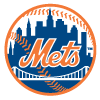 Francisco Lindor, SS, Mets: .300 wOBA, .356 xwOBA, .347 wOBA in 2023
Francisco Lindor, SS, Mets: .300 wOBA, .356 xwOBA, .347 wOBA in 2023
Lindor started slowly this season, ending the month of April with a .197/.280/.359 slash line. Even then, his five homers and four steals kept his fantasy value from bottoming out, and things didn't look too bad under the hood. His 7.3 percent barrel rate and 40.6 percent hard-hit rate remained close enough to league average, while his 16.7 percent strikeout rate was quite strong. He looked like an obvious bounce-back candidate, and the bounce-back did indeed happen. Since May 1, he's hit 280/.341/.500, good for a 140 wRC+, a mark that would represent a career high. He's maintained a strong strikeout rate (17.4 percent) over that stretch while hitting the ball much harder, with his barrel rate jumping to 16.7 percent and his hard-hit rate jumping to 49.0 percent. Lindor now has 16 homers and 16 steals in 90 games, putting him on pace to just miss a 30/30 season and go 29/29 if he continues to play every single game. Add in the fact that he's traditionally been a second-half player, with a 125 career wRC+ after the All-Star break and a 114 wRC+ before, and it looks like Lindor has a chance of finishing with a career year despite his poor April.
 Fernando Tatis, OF, Padres: .358 wOBA, .400 xwOBA, .332 wOBA in 2023
Fernando Tatis, OF, Padres: .358 wOBA, .400 xwOBA, .332 wOBA in 2023
Tatis certainly isn't having a bad season by any standards, even his own, but his .279/.354/.468 line with 14 homers and eight steals is only good for 64th overall in earned auction value, a disappointing showing for a player selected in the middle of the first round back in draft season. If you've been dealing with Tatis' underperformance for the first three-plus months of the season, the good news is you shouldn't have to deal with it for much longer. Per xwOBA, Tatis has been the seventh-best hitter in baseball this season, far better than his 39th-place ranking by actual wOBA. Tatis is making more contact that ever, with his 20.6 percent strikeout rate representing a career low. He hasn't been able to replicate the absurd 21.3 percent barrel rate he managed back in 2021, but a 13.9 percent barrel rate is quite strong and represents a meaningful step forward from his 11.0 percent mark from last year. Statcast suggests he's been considerably short-changed in the power department this year, with his .553 xSLG coming in far ahead of his actual .468 slugging percentage. If there's one legitimate negative to Tatis' stat line so far, it's his modest steals total, which puts him on pace for just 13.5 by season's end, far below the 29 he managed last season. He may need to run more as well as run into some better batted-ball luck if he's to live up to his draft-day price, but at the very least, the latter seems likely to happen down the stretch.
 Taylor Ward, Angels: .321 wOBA, .364 xwOBA, .329 wOBA in 2023
Taylor Ward, Angels: .321 wOBA, .364 xwOBA, .329 wOBA in 2023
On the surface, Ward has a mediocre 106 wRC+, nearly an exact match for his 107 wRC+ from last season. Dig a little deeper, however, and you'll see why Ward projects to be one of the more sought after outfielders on the trade market in the next few weeks. Per his .364 xwOBA, Ward is doing better at the plate than he ever has before, edging out his .362 wOBA (and .361 xwOBA) from his breakout 2022 season. Compared to that year, Ward's strikeout rate is up slightly (21.3 percent to 24.3 percent), but he's traded that for some louder contact, with his barrel rate rising from 12.1 percent to a career-best 14.5 percent. The result is another career high in xSLG (.499). Ward has a career high in fly-ball rate (46.9 percent), so he should keep slugging as long as he keeps hitting the ball hard. He also has a career low in chase rate (21.8 percent), so there's reason to believe his strikeout rate will go down and his batting average will go up in the near future as well. Health permitting, Ward should be in line for big things after the break, though what uniform he'll be wearing is not yet clear.
 Jesus Sanchez, Marlins: .303 wOBA, .353 xwOBA, .334 wOBA in 2023
Jesus Sanchez, Marlins: .303 wOBA, .353 xwOBA, .334 wOBA in 2023
Sanchez has never produced particularly notable year-end numbers. Limited to a platoon role, he's never topped 402 plate appearances and has never surpassed 14 homers. On a per-game basis, he hasn't been notable either, with his .235/.302/.428 career slash line translating to a forgettable 98 wRC+. He's at a 95 wRC+ this season (the product of a .240/.291/.407 line), but dig just a little deeper and there's reason to hold out hope for something more. Sanchez has adopted a more aggressive approach this season, and while that's led to a career-low walk rate (5.7 percent), it's also led to several positives. You might expect that a career-high chase rate (39.1 percent) would lead to an increase in whiffs, but a willingness to swing early and often is actually having the opposite effect, as his strikeout rate is down to a career-low 23.7 percent. His aggressiveness is not only leading to more contact, it's also leading to louder contact, with his 12.9 percent barrel rate and 51.5 percent hard-hit rate both standing as career highs. If he keeps doing what he's doing, Sanchez should soon see his slugging percentage rise up to meet his very encouraging .510 xSLG, and if that happens, full-time at-bats could be on the table.
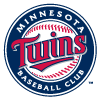 Pablo Lopez, SP, Twins: 5.11 ERA, 3.22 xFIP, 3.66 ERA in 2023
Pablo Lopez, SP, Twins: 5.11 ERA, 3.22 xFIP, 3.66 ERA in 2023
Lopez hasn't been the worst player drafted to be a fantasy ace this season — that honor would go to Spencer Strider, who gave up seven runs in nine innings and then underwent season-ending elbow surgery — but among those who stayed healthy, it's between him and Kevin Gausman. But while Gausman's ERA estimators indicate only a partial bounce-back is in store, Lopez's indicate that he's pitching as well as he ever has. It's not just xFIP, either; Lopez's SIERA (3.18) is also a career-best, while his xERA (3.38) would also represent an improvement on his ERA from last season. Lopez has paired the lowest walk rate of his life (5.3 percent) with an elite strikeout rate (28.1 percent), which comes in just a hair below his career high from last season (29.2 percent). Here are all the times a qualified starter has finished within a percentage point of those strikeout and walk rates since 2015, as well as the ERAs with which those pitchers finished:
| Name | Season | K% | BB% | ERA |
|---|---|---|---|---|
| Corey Kluber | 2015 | 27.7% | 5.1% | 3.49 |
| Jacob deGrom | 2015 | 27.3% | 5.2% | 2.54 |
| Jake Arrieta | 2015 | 27.1% | 5.5% | 1.77 |
| Madison Bumgarner | 2016 | 27.5% | 5.9% | 2.74 |
| Carlos Carrasco | 2017 | 28.3% | 5.8% | 3.29 |
| Luis Severino | 2018 | 28.2% | 5.9% | 3.39 |
| Zack Wheeler | 2021 | 29.2% | 5.4% | 2.78 |
| Justin Verlander | 2022 | 27.8% | 4.4% | 1.75 |
As you can see, pitching like this tends to work. If Lopez continues to do the two things pitchers have the most control over this well, he'll produce a great ERA going forward. There's more to pitching than strikeouts and walks, of course, and it's true that Lopez has a career-low ground-ball percentage this season, so the fact that he's allowed a few too many home runs isn't entirely a fluke. But his ground-ball rate of 39.6 percent is hardly some major flaw, so once metrics that tend to denote little more than bad luck like his HR/FB rate (15.6 percent) or his strand rate (64.8 percent) normalize, Lopez should return to being the ace he was drafted to be.
 Dylan Cease, SP, Padres: 4.21 ERA, 3.26 xFIP, 4.58 ERA in 2023
Dylan Cease, SP, Padres: 4.21 ERA, 3.26 xFIP, 4.58 ERA in 2023
Who is the real Dylan Cease? The guy who had a 2.20 ERA in 2022, or the guy who followed that up with a 4.58 ERA in 2023. If you took the boring answer of, "somewhere around the midpoint between those two," his ERA estimators would agree with you, even if his actual ERA implies that the 2023 model was the real Cease at work. Cease's 31.0 percent strikeout rate is his best mark since 2021, and his 7.4 percent walk rate is easily a career high, beating his previous career best (also set in 2021) of 9.6 percent. Pitchers who combine a strikeout rate north of 30 percent with a better than average walk rate are nearly always aces — Matthew Boyd in 2019 (30.2 K%, 6.3 BB%, 4.56 ERA) is the lone example I can find of a qualified starter in the last decade who met those strikeout and walk criteria over a full season yet nonetheless produced a poor ERA. If Cease has genuinely gained the ability to stop issuing so many extra free passes, there's little reason to believe he'll be anything other than a frontline starter moving forward. Examining Cease's control on a per-pitch level offers at least modest support for the idea that he's taken a step forward. His ball percentage rose from 37.8 percent in 2022 to 38.2 in 2023 but has fallen to 36.8 percent this season, which translates to a drop in expected walk rate from around nine percent to around eight percent, per Jeff Zimmerman's research at FanGraphs.
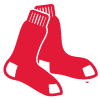 Brayan Bello, SP, Red Sox: 5.40 ERA, 3.68 xFIP, 4.24 ERA in 2023
Brayan Bello, SP, Red Sox: 5.40 ERA, 3.68 xFIP, 4.24 ERA in 2023
The Red Sox rotation received a fair amount of buzz heading into the season, with fans and analysts wondering what the team of new CBO Craig Breslow, new pitching coach Andrew Bailey and new special advisor Kyle Boddy (founder of Driveline) could do with a quintet of players who'd yet to put it all together but who had shown plenty of flashes of talent. For the most part, the optimism has been prescient, with Boston's rotation sitting seventh in ERA (3.67) despite a tough home park. The rising tide has yet to lift Bello, however, as he sits with a 5.40 RA and 1.49 WHIP through 16 starts. As his xFIP indicates, however, there's a case to be made that he's actually pitched quite well. His 22.1 percent strikeout rate is a 10th of a point below league average, while his 8.6 percent walk rate is 0.4 points worse than average. Combine average performance in those two areas with a strong ground-ball rate (52.4 percent) and you get a formula that usually works. Bello's WHIP will probably remain higher than his fantasy managers would like, as a ground-ball-heavy profile typically means a fair number of singles will slip through, but his 1.3 HR/9 is unlikely to remain that high unless his ground-ball skill evaporates. Nine qualified starters have a ground-ball rate of at least 50 percent this year, and they collectively have a 0.7 HR/9.
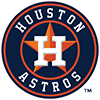 Josh Hader, Astros: 4.05 ERA, 2.39 xFIP, 1.28 ERA in 2023
Josh Hader, Astros: 4.05 ERA, 2.39 xFIP, 1.28 ERA in 2023
Hader finished the month of April with just two saves, a product of the Astros' slow start and his own early underperformance, as he finished the month with a 6.39 ERA. A 1.97 xFIP over that stretch indicated things would turn around in a big way, and they have, as he owns a 2.96 ERA since May 1. He's saved 14 games over that stretch, tied for fifth in the league. While a handful of rough early outings are still inflating Hader's ERA, there's little reason left to worry at this point. His 39.4 percent strikeout rate is elite (if somehow still below his career mark of 41.9 percent), and he's combined that with a 7.5 percent walk rate, marking just the second time he's been better than average in that category in his career. He's been particularly good from a strikeout and walk perspective since May 17, striking out 33 batters and walking just three over 21 innings of work. This looks like the same Josh Hader as ever and perhaps even a slightly upgraded model, particularly from a workload perspective. Careful usage with the Brewers meant he hadn't eclipsed 60 innings since 2019, a plan that helped him reach free agency with his arm intact. With a big contract now secured, he's allowed the Astros to lean on him more heavily, with his 40 innings putting him on pace for 70 by season's end.









